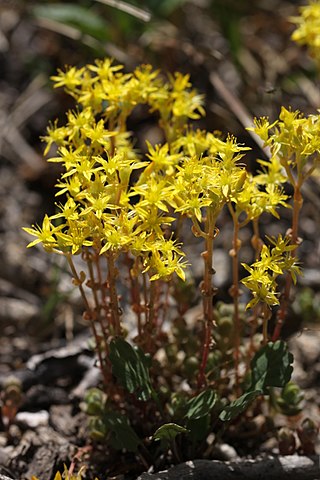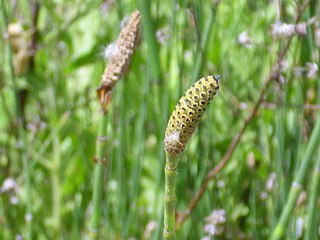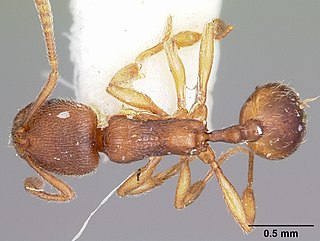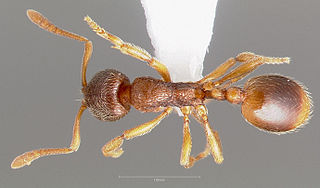Debile is a Latin word meaning "weak". It may refer to:

Stylidium debile, commonly known as the frail triggerplant, is a carnivorous, dicotyledonous plant that belongs to the genus Stylidium. S. debile is endemic to coastal areas in Queensland and New South Wales, Australia.

Stylidium section Debilia is a taxonomic rank under Stylidium subgenus Tolypangium. In his 1908 monograph on the family Stylidiaceae, Johannes Mildbraed had established this section as Debiles. In 1999, A.R. Bean published a taxonomic revision of several sections in subgenus Tolypangium in which he renamed the section from Debiles to Debilia.

Hieracium debile is a forb of genus Hieracium in the family Asteraceae, and was found only in Ecuador, in two separate collections gathered more than a century ago by W. Jameson. Its natural habitat is subtropical or tropical high-altitude grassland at altitudes between 3,500 m (11,483 ft) to 4,000 m (13,123 ft) but the exact location is unknown as the label in the collections says only "In summis alpibus Quitensibus".
Stylidium paniculatum is a dicotyledonous plant that belongs to the genus Stylidium. It is an herbaceous annual that grows from 10 to 35 cm tall. Oblanceolate or obovate leaves, about 6-30 per plant, form either a basal rosette with stems absent or in terminal rosettes when plant stems are present. The leaves are generally 10–31 mm long and 3–9 mm wide. This species produces one scape per plant. Inflorescences are 10–25 cm long and produce pink flowers that bloom from November to April in their native range. S. paniculatum is endemic to eastern Australia from Dalveen, Queensland to Tenterfield, New South Wales at elevations of 800 to 1000 metres. Its typical habitat has been reported as moist sandy soils on granite substrates along creeks, drains, or low-lying flats. S. paniculatum is closely related to S. debile and was originally described as a variety of S. debile, but raised to the species level by Anthony Bean in 1999. It differs from S. debile by the lack of bracteoles and its paniculate inflorescence. Its conservation status has been assessed as data deficient.

Sedum debile, commonly called orpine stonecrop or weakstem stonecrop, is a low growing carpet forming flowering plant species of the genus Sedum in the family Crassulaceae.

Je ne mâche pas les mots is the second studio album by French singer and television celebrity Elisa Tovati. It was released on 15 May 2006 in France as a digital download. It peaked at number 53 on the French Albums Chart.

Stenamma is a genus of cryptic leaf-litter ants that occurs in mesic forest habitats throughout the Holarctic region, Central America, and part of northwestern South America.
Stenamma andersoni is a Neotropical species of ant in the subfamily Myrmicinae.

Equisetum ramosissimumDesf., known as branched horsetail, is a species of evergreen horsetail. It is not the same species as Equisetum ramosissimumKunth, which is a synonym of Equisetum giganteum.

Stenammini is a tribe of Myrmicine ants with 6 genera and 1 fossil genus. Many genera in this tribe are known to collect seeds.

Stenamma impar is a species of ant in the family Formicidae.

Stenamma chiricahua is a species of ant in the family Formicidae.

Stenamma diecki is a species of ant in the family Formicidae.

Stenamma meridionale is a species of ant in the family Formicidae.

Stenamma schmitti is a species of ant in the family Formicidae.

Stenamma snellingi is a species of ant in the family Formicidae.














